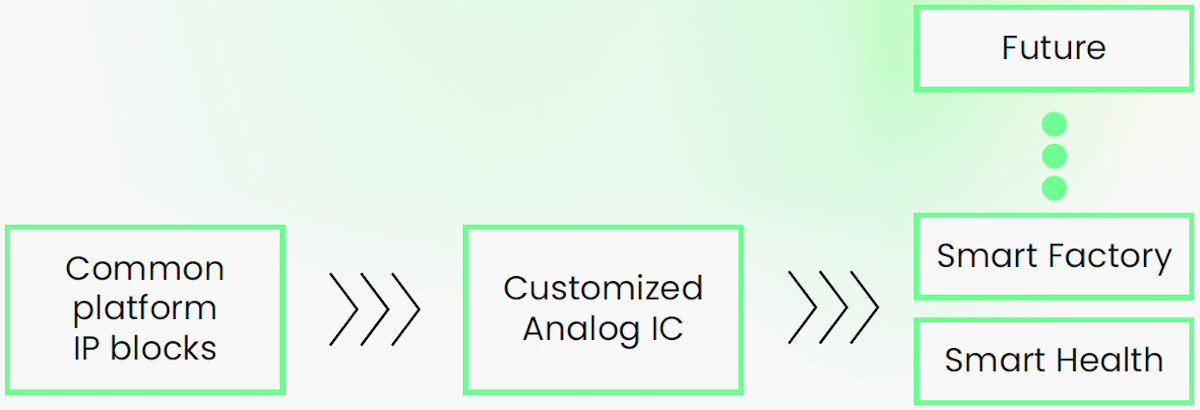I’ve said it before, and I’ll doubtless say it again; I’m a simple man. As I’ve also said before, this isn’t a pause for you to agree with me enthusiastically because I haven’t completed my train of thought. What I was trying to say was that I’m a simple man who likes a simple story.
I hate it when, after talking to someone about some new product, service, or technology they are promoting, I’m left with my head spinning and no clue as to what we were talking about. Contrariwise, I love hearing about something that (a) makes sense and (b) I can wrap my brain around.
This latter scenario was the case when I had a chat with Andrew Baker, who is the CEO at Orca Semiconductor. What? You haven’t heard of Orca Semiconductor? Actually, there’s no need for you to hang your head in shame because Orca was only founded in 2022, which is less than two years ago as I pen these words. Furthermore, much like their namesake (the apex predator killer whale), the folks at Orca have been cruising along under the surface of the semiconductor sea in stealth mode, and the company only recently stuck its head up to shout “Surprise!” (Yes, of course I’m thinking of the opening sequence to the 1975 Jaws movie.)
So, here’s the story in a crunchy nutshell. Take a deep breath—”Orca Semiconductor was founded to address the challenging design problems engineers face in competitive vertical markets that demand optimized analog semiconductor solutions”—phew! The guys and gals at Orca have developed a library of common analog intellectual property (IP) blocks they can quickly and efficiently combine and fine-tune to make custom analog integrated circuits (ICs) in the form of analog application-specific standard products (ASSPs). Initially, they are targeting the Smart Health and Smart Factory markets, but they are also eyeing a bunch of other markets for the future.

In a crunchy nutshell (Source: Orca)
According to World Semiconductor Trade Statistics (WSTS), this is a $60 billion market, which should provide enough problems requiring solutions to keep the chaps and chapesses at Orca busy for a while.
Speaking of which, Orca’s development team has been sourced from the leading players in the market. Between them, they’ve worked on hundreds of different devices and have 100+ patents to their names.
Of course, it’s easy to make anything sound exciting if you talk loudly and quickly and wave your arms around a lot but “The proof of the pudding is in the eating,” as the old saying goes. So, what does Orca pudding taste like (metaphorically speaking, of course)? Well, although the company has been in business less than two years, its customers are already working with samples of Orca’s first device, which is a… but let’s not get ahead of ourselves.
I’m a digital logic design engineer by trade, so the wibbly wobbly world of analog artifacts is something of a mystery to me. What I do know is that when people talk about “Big Analog” in the context of companies, they are talking about entities that are highly consolidated in the market, such as Texas Instruments (TI) and Analog Devices Inc. (ADI).
There are also a lot of predominantly digital companies like NXP, Renasas, and STMicro that boast a presence in analog space (where no one can hear you scream). These also fall into the big analog bucket, but maybe not with as big a splash as you might think—let’s call them “Little Big Analog,” just to muddy the waters and mix a metaphor (I never metaphor I didn’t like).
Andrew says that—due in large part to their history of consolidation—the dominant analog players are complex, political, and inefficient, all of which make partnerships with them difficult. For example, although these companies might entertain a $300+ million business opportunity, they would probably turn their noses up to (and pass on) anything less than $50 million to $100 million. Also, projects requiring customized solutions are usually on a deadline, but speed and efficiency of execution isn’t something the Big Analog companies are particularly good at these days.
As a result, system architects and design engineers are often left with only one choice, which is to “suck it up” and to employ standard off-the-shelf analog products. The problem here is that requirements are constantly evolving, and off-the-shelf products aren’t keeping up, thereby leaving designers with the unenviable task of trying to fit a square peg into a round hole. If you hit the peg hard enough with a mallet, you can make it fit, but it won’t fit quite right, and the result will be less than ideal.
This is where Orca shines, starting with the fact that they are small, nimble, and light on their feet (much like your humble narrator), thereby allowing them to respond quickly and efficiently. The folks at Orca aren’t aiming at providing custom design services. Their primary business model is to work closely with a group of companies targeting the same markets and with the same requirements, and to then create an analog ASSP that uniquely addresses these requirements better than anything else on the market.
All of which leads us to Orca’s first product, the OS1000 (Orca Semiconductor 1000). Boasting a Linear Battery Charger and SYS output, dual buck converters, and dual LDOs/Load Switches, the QS1000 is—quite simply—the most advanced power management integrated circuit (PMIC) in its class for smart health, wearable, hearable, and other connected devices.

Block diagram of the OS1000 (Source: Orca)
Today’s high-performance smart (health, wearable, hearable, etc.) applications demand the longest battery run times and utilize the most advanced microcontroller architectures, thereby requiring advanced power and battery management solutions. The OS1000 was developed to meet the most stringent system demands to maximize battery charge capacity and to allow the implementation of the most aggressive power saving modes.
Since batteries dominate these products, it’s important to maximize their capabilities. Overcharging a battery can damage the cell and reduce its lifetime. Undercharging a battery means you’re not fully utilizing the full capacity available to you. The OS1000 starts with the highest accuracy charge termination to safely maximize a battery’s charged capacity.
Modern MCUs support aggressive power-saving modes like dynamic voltage and frequency scaling (DVFS). The power consumed by the product is a function of its voltage and clock frequency. To achieve maximum computation performance, the MCU will request the highest voltage and highest clock frequency, When the MCU is idling, sitting and twiddling its metaphorical thumbs, it will request a lower voltage and clock frequency, thereby saving power.
When requested by the MCU, the OS1000 can implement the most aggressive power-saving modes by quickly transitioning up and down. The OS1000 can also recycle energy from the output back to the input during the transition from high to low voltage. Although this is a small amount of energy, the MCU can switch back and forth many times and very quickly, and lots of small amounts soon start to add up.
The OS1000 also performs power sequencing to control the rest of the design. Orca offers factory programming of default values for all parameters and control sequences, but these can be changed under user control during operation.
One thing I hadn’t really given much thought to prior to our talk is something called “Shelf Mode.” When you take a new product out of the box, you want “instant gratification,” in that you want it to power up immediately—you don’t want to have to charge it up for an hour before you can use it.
I must admit that I’ve been subconsciously aware of this sort of capability—with things like iPhones and iPads—without ever consciously thinking about it. Well, it turns out that the OS1000 supports a shelf mode that reduces battery current draw to only 100nA. “Wowsers,” is all I can say!
So, there you have it. The folks at Orca are shipping engineering samples of the OS1000 along with evaluation kits to lead customers as we speak. Production samples are scheduled for October 2024, with mass production following a month later in November 2024. Furthermore, the guys and gals at Orca are already working on their next product, but that will be a topic for another day.
The main thing to note here is that, when it comes to creating analog ASSPs, there’s a new kid in town, and this new kid looks set to make a mark for itself. What say you? What do you think about all this?




